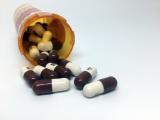New numbers released by the US Centers for Disease Control and Prevention (CDC) yesterday show that sexually transmitted disease (STD) rates in 2016 were at an all-time high, with 2 million new cases of chlamydia, syphilis, and gonorrhea reported.
According to data in the annual Sexually Transmitted Disease Surveillance Report, officials reported 1.6 million new cases of chlamydia in 2016, 470,000 gonorrhea cases, and almost 28,000 cases of primary and secondary syphilis.
The CDC issued a foreboding warning in the foreword to the report, noting that all progress made toward STD elimination in the United States has lost traction.
"Not that long ago, gonorrhea rates were at historic lows, syphilis was close to elimination, and we were able to point to advances in STD prevention, such as better chlamydia diagnostic tests and more screening," the CDC said.
"That progress has since unraveled. The number of reported syphilis cases is climbing after being largely on the decline since 1941, and gonorrhea rates are now increasing. This is especially concerning given that we are slowly running out of treatment options to cure Neisseria gonorrhoeae," the bacterium that causes gonorrhea.
The CDC said that the new number of STDs documented in 2016 are outpacing and undermining the center's Healthy People 2020 goals for sexually transmitted diseases. And, as antimicrobial resistance rises, so do treatment complications for the most common bacterial STDs.
Most new cases in MSM
The report focuses on chlamydia, syphilis, and gonorrhea infections, with special attention paid to at-risk groups, including women and infants, teens, and men who have sex with men (MSM).
Gay and bisexual men remain the most vulnerable population for new STDs, the CDC said. While almost half of all new chlamydia diagnoses were made in young women, MSM account for most of the new cases of syphilis and gonorrhea.
The CDC said 80.6% of new cases of syphilis diagnosed in men in 2016 were in MSM. MSM also had an increase in antibiotic-resistant strains of gonorrhea, especially those resistant to ceftriaxone. Ceftriaxone, along with cefixime, make up the last-line treatment for gonorrhea already resistant to azithromycin and other antimicrobials. Overall, a large share of the new gonorrhea cases involved MSM, the CDC said.
Syphilis rise includes women, infants
In 2016, syphilis rates increased 17.6% over 2015 numbers, including a 35% increase in women. And the country saw a 27.5% increase in the number of infants born with syphilis. A total of 600 cases of congenital syphilis were reported in 2016, which, according to the CDC, resulted in more than 40 deaths and severe health complications among newborns.
"Every baby born with syphilis represents a tragic systems failure," said Gail Bolan, MD, director of the CDC's Division of STD Prevention, in a press release accompanying the report. "All it takes is a simple STD test and antibiotic treatment to prevent this enormous heartache and help assure a healthy start for the next generation of Americans."
Financial cost of STDs
The CDC urges both local and federal surveillance to monitor STDs, noting that the diseases drain the healthcare system, costing $16 billion annually to treat.
Moreover, there are fewer state health departments operating STD clinics, and more than half of all state health STD departments have experienced budget cuts since 2012.
The CDC also urges more routine STD testing and prompt treatment of bacterial infections.
See also:
Sep 26 CDC report
Sep 26 CDC news release
Jul 6 CIDRAP News "Global officials warn of pan-resistant gonorrhea"

















